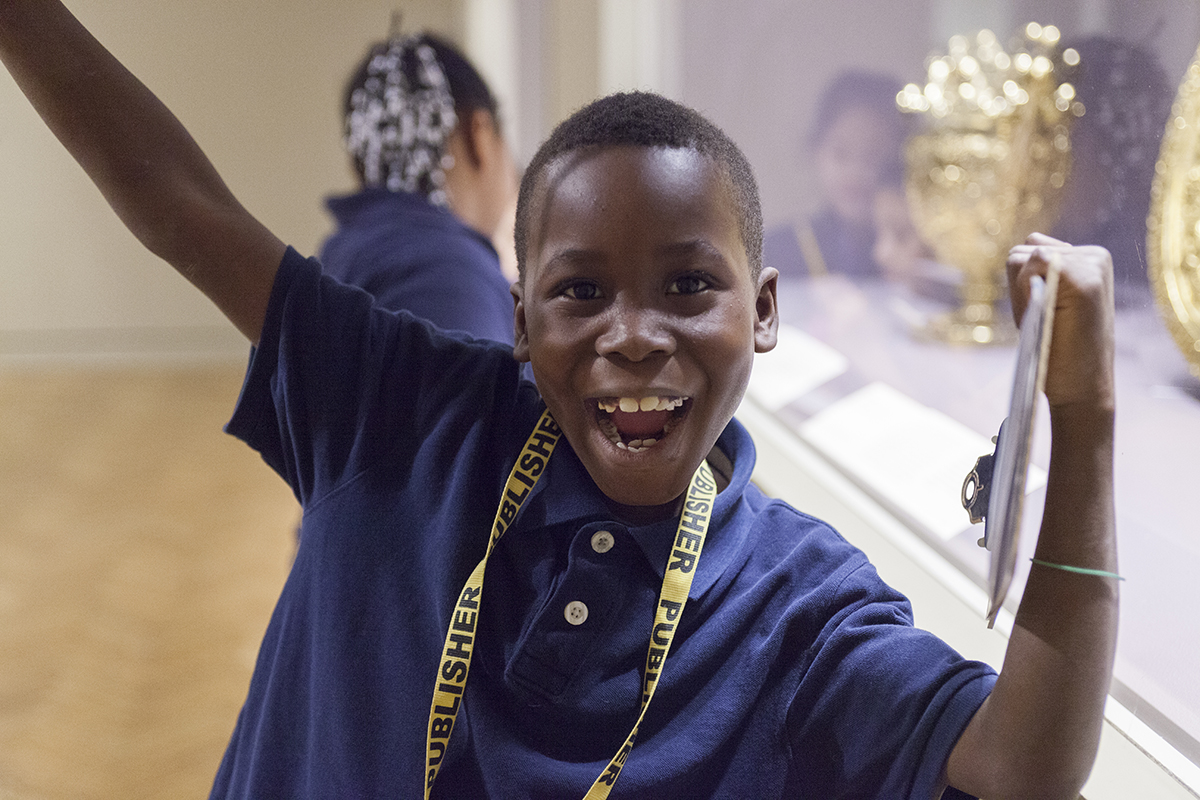Cultural fluency
Before you start a tour, remind yourself that the group brings their specific experiences and wisdom with them. Every tour is a learning opportunity, not only for the students, but also for you. Docents and guides who achieve lots of engagement on tours often exercise cultural humility, freeing up the discussion to the group and remaining open to all perspectives expressed.
Through the tour, use the names of the students (if they have name tags). While some names will be unfamiliar or new to you, they are not unfamiliar to the students. Don’t be embarrassed or feel bad if you mispronounce a name; it happens to us all. Just apologize and try to correct your pronunciation. It’s worth the effort. Using everyone’s name during discussion makes the students feel as if they belong in this space with their class.
On the tour, it’s wonderful to provide exposure to art that connects to students’ cultural backgrounds. However, avoid expectations that students know about artworks from their respective cultures. For example, do not direct questions about a Somali work of art solely to Somali students. Instead, allow the entire group to respond to questions.
When presenting a work by an unidentified artist, specifically identify the cultural group from which the belonging originates. Continue to reference the culture’s name in discussion, and avoid the use of “these people” or any terms that signify the culture as the “Other” in your facilitation. For example, here is how you could introduce a drum made by an unidentified artist: “The Kundu drum was made by an artist of the Iatmul people. The Iatmul live in Papua New Guinea and use hand drums to accompany clan songs performed at important community events.” If uncertain of the pronunciation of a culture’s name, check with IPE staff or your colleagues, as well as look online for pronunciation guides. Several volunteers have worked on great pronunciation guides, posted on the volunteer website for your use, under Peer Sharing/Pronunciation Guides.
As we become a more gender-fluid culture, we should use more inclusive and non-binary terms, such as “students,” “you all,” or “second-graders.” Avoid using “boys and girls” and asking gendered questions, such as directing questions only to girls or boys in the group (e.g., How many of you girls would like to dress up like this? How many of you boys like to go fishing?).
Acknowledgment of biases or preferences
Docents and guides actively working to engage the entire group are also gaining awareness of their own biases or preferences. We are all human, and we all have biases, both explicit and implicit. Acknowledgment of that statement is one of the first steps to develop an inclusive tour. Perhaps you identify with the students who process information quickly and are first to raise their hands at each stop. Perhaps you call on those students repeatedly because you dread silence or a sense of disengagement in a group.
Implicit biases are harder to identify as they are hidden to the conscious mind. In observations, implicit biases may sometimes be seen when docents or guides repeatedly pass over students of color or girls who have their hands raised with the rest of the group. To work on identifying implicit biases, check out Harvard’s Project Implicit. At the end of the tour, a reflection on who participated in your group may also help you identify and disrupt patterns of unintentional bias. (See the Reflection section at the end of the toolkit for examples of post-tour reflection questions.)
